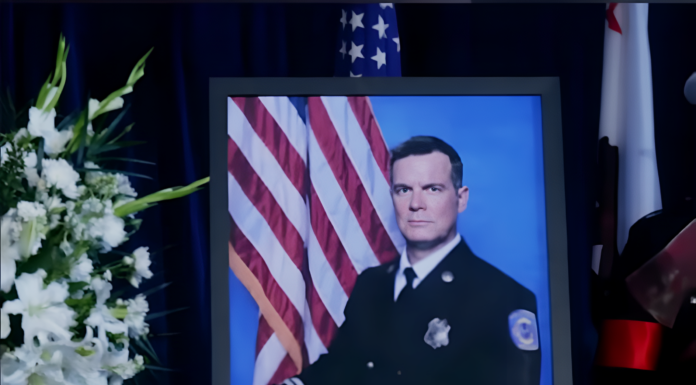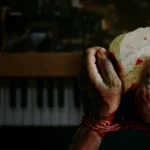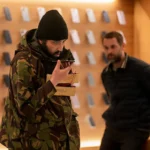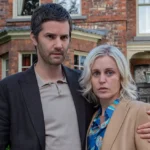The TV show 9-1-1 brings the high-stakes world of first responders to life, and at its heart was Captain Bobby Nash (Peter Krause). In Los Angeles, where danger is never far away, Captain Bobby Nash was the steady leader of Fire Station 118. But behind his cool exterior, Bobby carried a painful past that shaped everything he did. When a deadly virus struck, a big question hung in the air: how did this brave hero die? But in What chain of events led to the loss of a man who seemed unbreakable? The story of Bobby’s final moments is about sacrifice, bravery, and a love that lasted beyond the end.
Who Was Bobby Nash?
Robert Wade “Bobby” Nash was more than just the captain of Station 118 of the Los Angeles Fire Department. In a real and symbolic sense, he was a man made in fire. Bobby was born and raised in St. Paul, Minnesota. He started his career as a fire captain with the St. Paul Fire Department. He made a home there for himself, his wife Marcy Nash, and their two kids, Robert Nash Jr. and Brook Nash. But a catastrophic fire, one he inadvertently caused, claimed his family and shattered his world. The guilt of that loss drove him to Los Angeles, where he took command of Station 118, determined to save as many lives as he could to atone for those he couldn’t.

In Los Angeles, Bobby found a new family in his team—firefighters like Evan “Buck” Buckley (Oliver Stark), Howard “Chimney” Han, Henrietta “Hen” Wilson, and Ravi Panikkar. He also found love again with Athena Grant (Angela Bassett), a fierce LAPD sergeant who became his wife. Together, they had to deal with a lot of problems, from natural disasters to their own inner demons. Bobby was a great leader who led his team through tough situations with a steady hand and a caring heart. But even though he seemed calm, he was burdened by his past, and it affected every choice he made.
Bobby was a man of many sides. He was a leader who put his team first, but he had trouble believing in himself. He was a hero who saved many lives, but he always thought he could avoid making the same mistakes. His journey on 9-1-1 was one of redemption, love, and never giving up on finding a purpose. However, in Season 8, Episode 15, called “Lab Rats,” that sad journey came to an end.
The Crisis of Contagion

The two-part storyline called “The Contagion Event” was where Bobby Nash’s death happened. It was an exciting arc that put the 118 to the test like never before. It all started with a call to a lab where dangerous tests were being done on contagions. A fire that turned out to be intentional trapped a group of scientists inside. Bobby led Chimney (Kenneth Choi), Hen (Aisha Hinds), and Ravi, who were on his team, into the fire to save them. They did well but it cost them. The group was stuck in the lab and came into contact with a genetically modified strain of Crimean-Congo hemorrhagic fever (CCHF), a virus that kills and has no known cure.
Things got worse very quickly. Hen got hurt badly and needed surgery right away in order to live. Chimney got the virus and started to show signs of it, including fever, weakness, and eventually a lot of bleeding. Ravi’s oxygen tank ran out, which put his life in danger. Bobby, who is always in charge, took over. With Chimney’s help, he did a makeshift surgery on Hen to save her. He came up with a way to get Ravi’s oxygen supply back up and running. And when Chimney’s condition got worse, Bobby, Hen, and Chimney’s wife, Maddie, used lab resources to make saline to keep him alive.
Athena and Buck fought outside the lab to figure out what to do. A scientist said that Dr. Blake, the angry researcher who started the fire, had made an antidote but had taken it with him when he ran away. When the FBI took over the scene, they treated the trapped firefighters like test subjects and wouldn’t let them out of quarantine. Bobby knew that the government wasn’t doing anything, so he sent Athena a coded message telling her to find Dr. Blake. As soon as Athena and Buck got the idea, they went after the scientist and found her at a Big Pharma office, where she planned to sell the cure.
The Race for the Cure

Athena and Buck’s mission was a race against time. With help from Officer Williams and Karen Wilson, Hen’s wife, they uncovered Dr. Blake’s plan. Athena infiltrated a crime scene at Blake’s house, securing a memory card with photos that revealed Blake’s savior complex. Buck deduced that the fire was arson, part of Blake’s scheme to profit from the antidote. Their investigation led them to the corporate office where Blake was negotiating a deal.
Athena confronted Blake, securing the antidote, but their escape was complicated by the arrival of the FBI and Army. Buck arranged for Tommy Kinard, a pilot, to fly them to the lab, but military helicopters forced them to land at the LA Memorial Coliseum. In a daring move, Athena slipped away with Karen’s help, driving to the lab with the cure. Suited up and guided by the scientists, she delivered the antidote to Bobby just in time to save Chimney.
Bobby’s Final Sacrifice
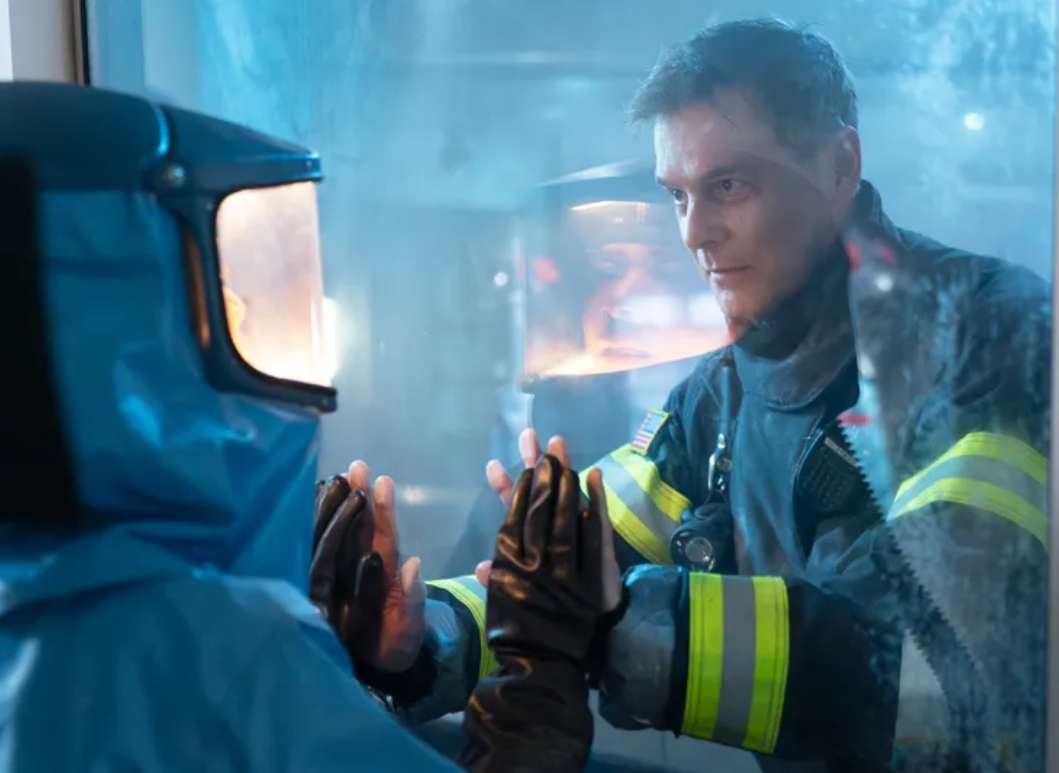
As the team prepared to evacuate, Bobby made a choice that would define his legacy. He walked back into the containment area, sealing himself inside. Buck, horrified, rushed to the door, where Bobby removed his mask, revealing blood streaming from his nose—a sign of CCHF infection. Bobby explained that his oxygen hose had been compromised during the explosion, likely exposing him to the virus hours earlier. He had hidden his symptoms, ensuring the single dose of the antidote went to Chimney.
Buck radioed Athena, who rushed to the lab. Through the sealed door, Bobby and Athena shared a devastating goodbye. “I started feeling it hours ago,” Bobby admitted, his voice steady despite the pain. “There was only one dose, and I chose to save my team because it was the right thing to do.” Athena pleaded with him to fight, but Bobby knew his time was up. “L.A. was supposed to be my penance, not my home,” he told her. “Then you said yes to a dinner invitation, and I started to live again.”
Their final moments were a testament to their love. Athena pressed her hand against the glass, and Bobby mirrored her gesture. “I’m here for all the parts that we have left,” she said, tears streaming down her face. Bobby, coughing and weakening, knelt to pray, collapsing moments later. Outside, the 118 mourned as his body was removed in a body bag, his helmet left behind as a symbol of his sacrifice.
Bobby Nash’s death was a seismic loss for 9-1-1. He was the heart of Station 118, a father figure to Buck, a mentor to Hen and Chimney, and a partner to Athena. His final act—saving his team at the cost of his own life—was the culmination of his journey. From the ashes of his past in St. Paul to the chaos of Los Angeles, Bobby sought redemption through service. In the end, he found it, but at a price no one was ready to pay.
didn’t plan on witnessing Bobby’s funeral procession back in march but here we are#911onABC #911abc #DTLA #keepproductioninLA pic.twitter.com/tGnluWR5ah
— Serpy. 🖤⚡💀 (@SerpentinexBLK) April 18, 2025
Showrunner Tim Minear described to tvline the decision to kill Bobby as a creative necessity to propel the story forward. Peter Krause, who portrayed Bobby with nuance and depth, accepted the choice with professionalism, understanding its impact on the show’s narrative. The loss reverberates through the 118, setting the stage for new challenges in Season 9 and the upcoming 9-1-1: Nashville.
Bobby’s story is a reminder of the cost of heroism. He wasn’t invincible, as he once likened himself to a cartoon character who could survive any disaster. He was human, flawed, and profoundly brave. His death leaves a void, but his legacy endures in the lives he saved and the love he left behind. As Athena, Buck, and the 118 move forward, they carry Bobby’s spirit with them—a beacon of courage in the face of darkness.
Watch The trailer for Bobby’s Funeral
What is Crimean-Congo Hemorrhagic Fever (CCHF)
Crimean-Congo hemorrhagic fever (CCHF) is a severe viral disease caused by the Crimean-Congo hemorrhagic fever virus (CCHFV), a member of the Nairoviridae family. It’s primarily spread to humans through bites from infected Hyalomma ticks or contact with infected animal blood or tissues, especially during slaughter. Human-to-human transmission can occur via contact with bodily fluids, posing risks to healthcare workers or close contacts. CCHF is endemic in regions like Africa, the Balkans, the Middle East, and Asia, particularly south of the 50th parallel north.
In 9-1-1 Season 8, Episode 15, the show depicts a fictional genetically engineered variant of CCHF, which is more contagious and deadly than the real virus. This dramatized version leads to Captain Bobby Nash’s death after he’s exposed in a lab fire and sacrifices the only antidote dose to save his team. While the show exaggerates CCHF’s transmission and impact for narrative purposes, the real virus is a serious but less transmissible disease primarily spread by ticks or direct contact, not airborne or easily epidemic.
Come back to tvacute.com soon for more 9-1-1 news, previews, and summaries.
[FINALE] 9-1-1 SEASON 7 EPISODE 10 RECAP: ‘ALL FALL DOWN’ ENDING EXPLAINED!
9-1-1 Season 7 Episode 5 Recap: You Don’t Know Me
911 Season 7 Episode 2 Recap: “Rock the Boat”
9-1-1 Season 7 Episode 2: What to Expect & Watch Promo
‘9-1-1’ Season 7 Episode 1 Recap: A Stormy Start
Does Chimney (Kenneth Choi) Die in 9-1-1? Is He Leaving the Show?
9-1-1 Lone Star Season 4: Is Mateo’s Cousin Marvin Dead? Mateo’s unexpected history!

